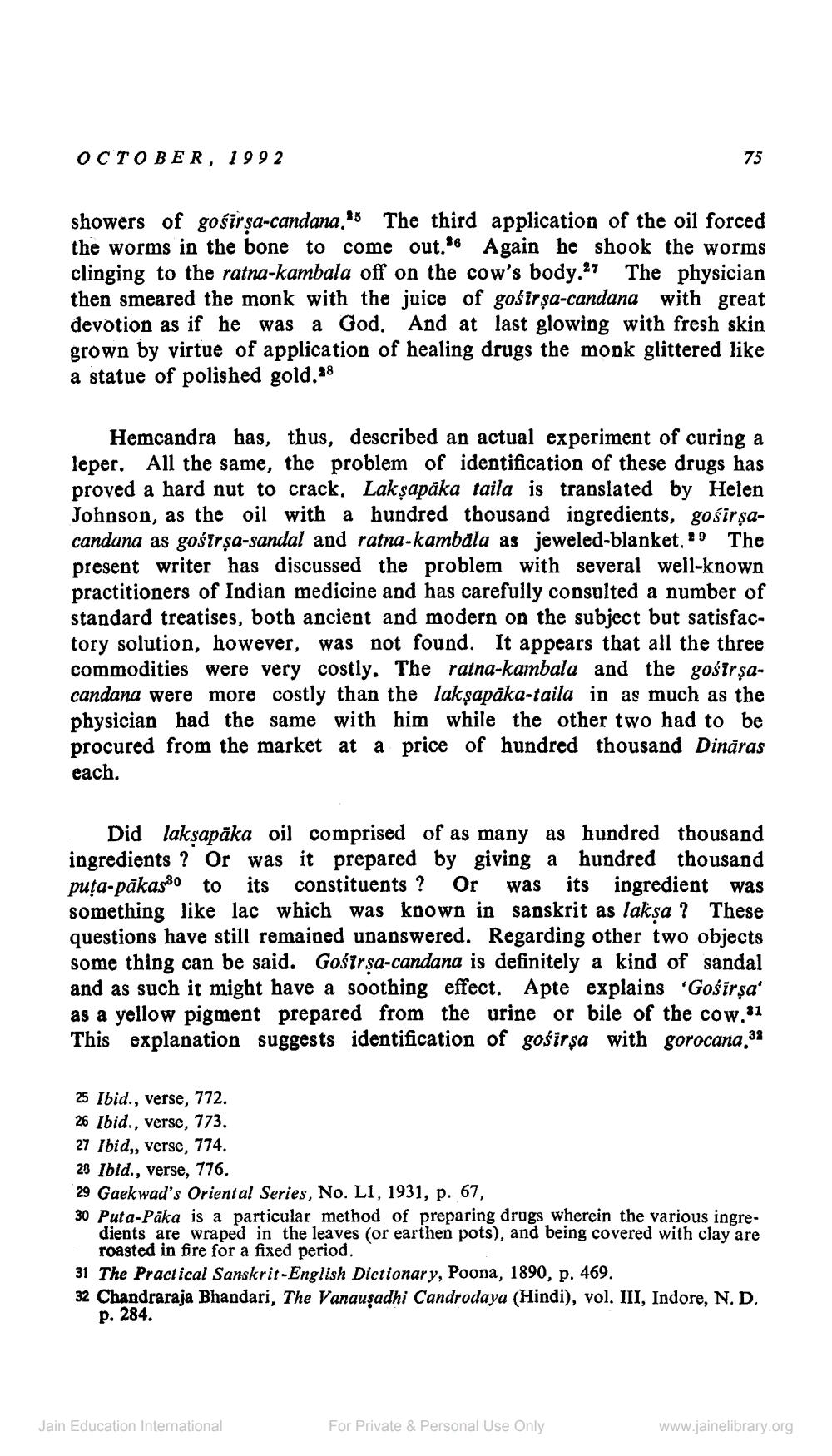________________
OCTOBER, 1992
75
showers of gośirşa-candana. *5 The third application of the oil forced the worms in the bone to come out.*6 Again he shook the worms clinging to the ratna-kambala off on the cow's body.27 The physician then smeared the monk with the juice of gośirsa-candana with great devotion as if he was a God. And at last glowing with fresh skin grown by virtue of application of healing drugs the monk glittered like a statue of polished gold. 28
Hemcandra has, thus, described an actual experiment of curing a leper. All the same, the problem of identification of these drugs has proved a hard nut to crack. Lak sapaka taila is translated by Helen Johnson, as the oil with a hundred thousand ingredients, gośirşacandana as gośīrşa-sandal and ratna-kambala as jeweled-blanket, 29 The present writer has discussed the problem with several well-known practitioners of Indian medicine and has carefully consulted a number of standard treatises, both ancient and modern on the subject but satisfactory solution, however, was not found. It appears that all the three commodities were very costly. The ratna-kambala and the gośīrsacandana were more costly than the laksapaka-taila in as much as the physician had the same with him while the other two had to be procured from the market at a price of hundred thousand Dināras each,
Did laksapaka oil comprised of as many as hundred thousand ingredients ? Or was it prepared by giving a hundred thousand puta-päkaso to its constituents? Or was its ingredient was something like lac which was known in sanskrit as laksa ? The questions have still remained unanswered. Regarding other two objects some thing can be said. Gośīrşa-candana is definitely a kind of sandal and as such it might have a soothing effect. Apte explains 'Gośirşa' as a yellow pigment prepared from the urine or bile of the cow.81 This explanation suggests identification of gośirșa with gorocana. 38
25 Ibid., verse, 772. 26 Ibid., verse, 773. 27 Ibid,, verse, 774. 28 Ibid., verse, 776. 29 Gaekwad's Oriental Series, No. L1, 1931, p. 67, 30 Puta-Pāka is a particular method of preparing drugs wherein the various ingre
dients are wraped in the leaves (or earthen pots), and being covered with clay are
roasted in fire for a fixed period. 31 The Practical Sanskrit-English Dictionary, Poona, 1890, p. 469. 32 Chandraraja Bhandari, The Vanauşadhi Candrodaya (Hindi), vol. III, Indore, N. D.
p. 284.
Jain Education International
For Private & Personal Use Only
www.jainelibrary.org




